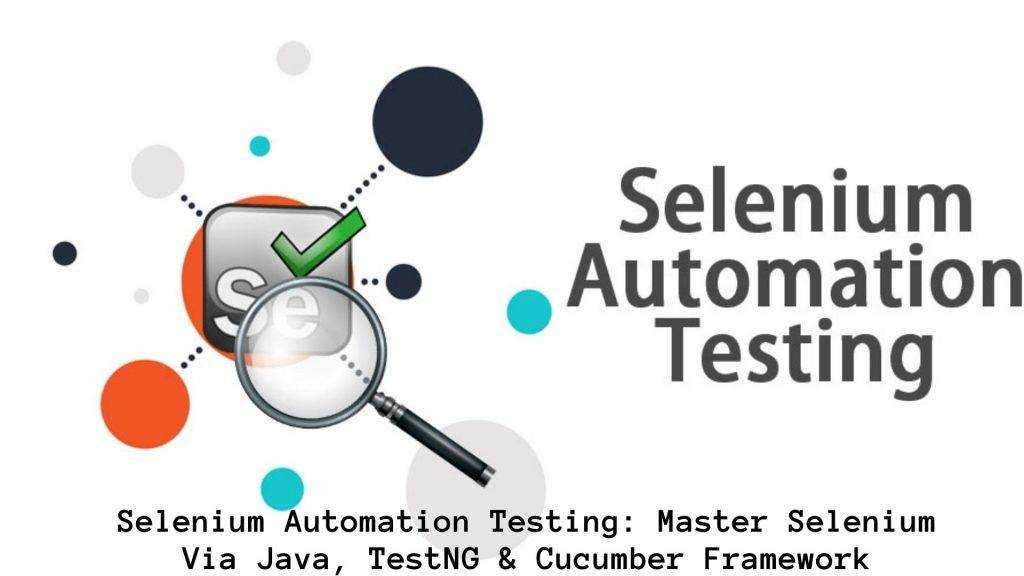Selenium, employed in Selenium Automation Testing, is one of most popular DevOps tools today. Selenium is an open-sourced umbrella project for range of tools and libraries aimed at supporting browser automation, providing a playback tool for authorizing functional tests without need to learn test scripting language. Selenium Automation Testing tools, implementation of which is taught in selenium automation testing course, is used to automate tests across browsers for web applications. It consists of four different tools-Selenium Remote Control, Selenium Grid, Selenium IDE, and Selenium WebDriver, supporting browsers like Chrome, Safari, Firefox, Mozilla, etc. Multiple programming languages are used for creating Selenium test scripts like Ruby, Python, Java, C#, etc. ItView, leading software training institute in Pune, is a pioneer in preparation business to convey preparing on Selenium Automation Testing tool in Pune. Our Selenium Automation Testing course is mix of homeroom preparing with an ideal blend of study hall meetings and practical’s. ItView offers popular courses such as Python Programming, Amazon Web Services, Selenium with Cucumber Framework, Java Training, Tableau Online Training & Certification, Power BI Training, Web Designing, Angular & DevOps Training, alongside job-oriented courses like Python Full-Stack Developer, Java Full-Stack Developer, Software Testing, Data Analytics Training & PHP Classes.
Reasons Validating Java’s Preference with Selenium:
- Java has wide network of active software developers contributing to writing test scripts, facilitating Java community’s growth, in a way, helping Selenium Automation Testing.
- Program execution is faster in Java than other programming languages.
- Integrating Selenium Automation Testing taught in Selenium Automation Testing course, with Java is comparatively easier.
Using Selenium with Java involves:
- Java Installation-To download and install Java, you need to:
- Download Java.
- Install Java.
- Set environment path.
- For verification, go to command prompt and type java-version.
- Eclipse Installation-Eclipse is most sought-after Java IDEs. To download and install Eclipse:
- Go to official website and download Eclipse.
- Extract downloaded files.
- An eclipse.exe icon will appear in Eclipse folder.
- Selenium Client & WebDriver Language Bindings-Download Selenium Java Client Driver, go to Selenium official website.
- Configuration of Selenium WebDriver with Eclipse-Steps involve:
- Launch Eclipse (Double-clicking on eclipse.exe file).
- Build workspace.
- Create new Java project.
- Right-click on project & create package under it.
- Right-click on package & make new class.
- Add Selenium jar files to project by right-click on project folder, go to properties.
- Navigate to “Java Build Path”.
- Click on “Add External JARs”.
- Click on “Apply & Close”.
- First Test Using Selenium with Java-
- Go to official selenium website.
- Go to third-party driver browser section.
- Download executable for specific browser.
- Put code in eclipse window.
Before you start performing Java automation testing with Selenium:
- Install latest java development environment i.e., JDK 1.6 or higher.
- Download latest Selenium Client & its WebDriver bindings from official website.
- Install Maven from official website, which can be easily installed on Linux/MacOS using Homebrew package manager.
Cucumber is test automation framework which leverages Behaviour Driven Development (BDD) for collaboration in between Business and IT teams, empowering users to define applications’ behaviour in plain English language, making it easier for non-programmers to understand acceptance criteria. Cucumber, which has been developed in Ruby programming language, supports all majorly-used programming languages for testing like Java, C#, Python.
Advantages of Using BBD for Selenium Automation Testing & Cucumber Testing:
- Collaborative approach, bridging gap between stakeholder and business teams.
- Focuses more in terms of end-user experience or inclined towards behaviour specifications as compared to conventional Test-Driven methodology, making end users easier to understand for performing Selenium Automation Testing taught in Selenium Automation Testing course.
- With TestNG certification, you can challenge your skills in performing automated testing with TestNG.
Creating First Project Employing Cucumber For Selenium Automation Testing-Cucumber framework consisting of Feature file, Scenario, Annotations, Tags, Step Definitions, Test Runner File, make use of Eclipse IDE for coding purposes. Create Feature file with user defined specifications in Gherkin Language used to define executable specifications with help of predefined set of contextual keywords:
- Create folder for organizing all features files.
- Select File from navigation menu.
- Name file using “Login.feature”.
- Once feature file is created, alert is prompted asking you to select editor to be installed from marketplace.
- Select IDE extensions for file type and Cucumber Eclipse Plugin.
- Click on Install, Finish & Install Anyway option and Restart Now once installation is completed.
Running First Script of Selenium Automation Testing & Cucumber Framework-For automation testing with Selenium & Cucumber framework for Java, create GoogleSearch.feature file under Features package. Once you’ve completed creating feature file, created steps are highlighted with warnings. To resolve errors, navigate to step definition file to complete coding the gist. Copy code and define path to your Chrome driver. Make sure Test Runner java file is named as RunCucumberTest.
Using Lambda for Selenium Automation Testing & Cucumber Testing-Lambda is practical solution if we’re to run parallelly Selenium Automation Testing and Cucumber testing without any hiccups. As cloud solution, it offers scalability for reducing build time, improve browser test coverage, provision to validate responsive tests from pixel-to-pixel accuracy, enhanced reporting and analytical capabilities. Configure Cucumber to enable parallel test execution of Selenium with Java employing Lambda for automated cross browser testing.
Configuring with Lambda for Parallel Running of Selenium Automation Testing with Cucumber & TestNG-Replace step definition file including Remote WebDriver configuration to connect to cloud virtual machines. For provisioning parallel execution, integrate current framework with TestNG, providing an easier configuration and additional capabilities.
Learn Selenium using Java, TestNG and Cucumber Framework for Selenium Automation Testing taught as part of Selenium Automation Testing course and see marked difference it makes to your careergraph!

